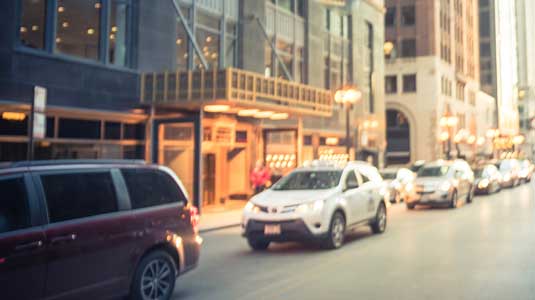A recent ITS International Magazine & Hikvision survey shed new light on how traffic authorities are hoping to use AIoT solutions to tackle congestion, reduce emissions, and provide better and safer road-user experiences. To get a more in-depth understanding of the survey findings – and to see how Hikvision can help authorities harness technology for better traffic management outcomes. Juan Sádaba, ITS Business Development Manager at Hikvision Spain shares the insights from the survey report.
AI in traffic management
There are a myriad of applications and opportunities for AI in traffic management, especially related to deployment of low-emissions zones, congestion management schemes, and traffic violation management. To support more efficient traffic management operations, Hikvision builds AIoT solutions, such as cameras with LPR (License Plate Recognition), vehicle speeding detection, vehicle classification and a range of other capabilities. These AI-powered features are built into the cameras themselves, making them true AIoT devices. This reduces operators’ infrastructure and licensing requirements and costs vs. centralized servers that host the AI capabilities.
Overcoming AI Adoption Challenges
This is totally in line with what we are seeing and what our customers are saying. The way to simplify and accelerate the process of deploying AIoT solutions, in my view, is to implement open architectures and platforms that can be integrated seamlessly with other traffic management systems. To support this, Hikvision provides solutions with open APIs that can be easily integrated into traffic management environments via a software developer kit (SDK). Likewise, other manufacturers can choose to integrate their technologies into HikCentral, our centralized management platform, which allows customers to run and manage their entire traffic management environment and all connected devices centrally. Finally, but equally importantly, partners and customers can develop their own value-added applications for our AIoT solutions with Hikvision Embedded Open Platform 2.0 (HEOP) to further increase their AI capabilities.
Demand for multi-dimensional’ perception cameras
Multi-dimensional perception is about integrating video cameras with other sensing capabilities, like radar, sonar, and smoke detection, which will help forge more powerful traffic management systems. Hikvision are leaders in this regard, ploughing around 10% of our annual revenues back into R&D to drive the next wave of AIoT technology innovations. As part of our innovation strategy, we are building smart cameras that combine video, audio, radar, thermal imaging, and humidity detection, and we are also building cameras with multiple AI features in a single device. One example is our early-warning traffic solution, which combines smart video and radar technology to “see” objects in the road long before they are visible to drivers, even in very low-visibility weather conditions. If there are dangers around a curve or farther down the road, or blind spots caused by intersections, drivers are notified in real time via roadside digital signage, giving them plenty of time to brake. This minimizes the danger and ensures they arrive safely at their destination.
Bicycle lanes, pedestrian areas, and emissions control scenarios
We fully understand the pressing need for solutions that improve road safety – including cycle and pedestrian safety – as well as for solutions that help authorities reduce emissions and meet their environmental targets. To this end, our AIoT solutions can protect both cycle lanes and pedestrian areas, generating an alarm when a vehicle enters these types of zones. Using cameras equipped with accurate, highly reliable license plate recognition algorithms, traffic police can also conduct ‘forensic’ searches for vehicles of interest, which can also help to improve public safety.
In terms of controlling emissions, our solutions can apply complex vehicle access rules for restricted areas and automate access and charging for optimal scheme efficiency. As an added benefit, we also offer ‘stand-alone’ cameras that can help cities without fixed fiber networks and energy networks accelerate their Low Emissions Zone projects. All of these innovations are helping cities to meet the EU’s 2023 deadline for Low Emissions Zone rollouts.
Importance of AI for traffic management in the future
We are excited about what’s coming next in terms of AI and traffic management. In spite of our numerous innovations in the field of imaging and video-related technologies, we are now highly focused on developing the next generation of multi-dimensional perception solutions, and artificial intelligence algorithms for our customers’ traffic management. We are also exploring as-yet untapped bands in the electromagnetic spectrum, covering X-rays, infrared rays, millimeter waves, sound waves, and many more to assess their potential applications in future traffic management technologies.
The breadth and depth of our R&D will help traffic authorities to build safer and smart traffic systems that contribute to a better quality of life in our cities.












